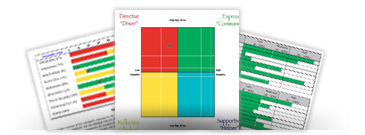Customer Feedback – How Often and What to Ask
Customer feedback provides key direction to business owners, shaping the future decisions and encouraging product improvement or product experimentation. Figuring out how, when and what tools to use to gather customer feedback can be daunting. However, customer feedback training can prepare any salesperson with the right tools and tactics to get the most useful responses from customers in order to measure client satisfaction.
Whom to target for customer feedback?
Two groups can provide the most effective feedback on a company’s offerings: 1) those who use the products and services and 2) those who have heard presentations about products and services but were not inclined to make a transaction.
First, salespeople should seek experience-based feedback from customers who have already purchased or tried goods and services. These are the people who will have practical and reliable insight. Clients who have also used competitors’ services can provide comparative data. Especially seek reviews and commentary from those in the company’s target demographic.
Attendees of any group presentation or one-on-one presentation designed to sell products or services must also receive follow-up to determine why they were not compelled to act on offerings.
During customer feedback training, sales managers should emphasize that not everyone targeted for feedback will respond. The response rate is typically five percent to 10 percent.
What to ask during customer feedback?
During feedback solicitation, questions should be focused on user experience and future commitment:
For user experience, ask users how they felt about:
- Using the website or store. Inquire about how convenient and easy it was to purchase or browse and if every coveted product or service was available.
- The salesperson and presentation. Seek information on how helpful and thorough the sales presentation was. Ask questions about content as well as the presenter’s delivery style, attire and attitude.
- Product or service purchased. After verifying the exact item purchased, ask what needs were fulfilled by the purchase and what features attracted the customer. Ask how, when and where the customer will use the product and what the customer would improve about the product.
- Overall industry offerings. Ask how the customer feels about competitors’ products and if there is anything that’s missing in the market that is not provided by any company.
To determine future commitment or loyalty to the company, ask:
- Whether the user would recommend the company’s product and services to a friend or relative.
- Would they consider the company for other transactions?
When to ask for feedback?
Don’t wait long to ask for feedback — especially from those who have chosen not to patronize the company. Immediately follow-up a sales presentation by contacting attendees that day – and no later than the day after; this way you’ll get fresh and raw feelings.
Follow-up again with those who have made purchases, giving them two weeks to a month to try out a product or service on a regular basis. This will allow them to study any problems and gauge whether they are fully satisfied.
How to ask for feedback?
Through customer feedback training, salespeople should become familiar with formal and informal as well as automated and human feedback tools.
Human interaction, especially during a phone survey that is staged as a conversation, can be extremely effective in putting the customer at ease so they can feel free to share candid thoughts. However, not every business has the manpower or time for customer feedback training involving live representatives on direct phone lines, so consider these other tactics.
- Website Contact Form. This allows anyone at any time to share thoughts on the brand without prompts.
- Email. Invite the customer to email questions and concerns. Also, send post-transaction surveys by mail.
- Social Media. Use hash tags, questions and contests to prompt product conversation among followers.
- Focus Groups. Target specific customers and ask them to join a company focus group. Send them polls or new products to try on an ongoing basis
- Product Reviews. Encourage buyers to provide product reviews directly on the company website or share reviews with the general public via YouTube videos, Instagram photos, blogs or status updates.
- Community Forum. Create a sense of community and loyalty by having customers create an account and join a brand forum to talk about the company and its offerings with other fans.
No matter what tool you use to gather customer information, avoid the temptation to offer any bonus or special discounts to those who give feedback. That can skew opinions and generate false feedback.



